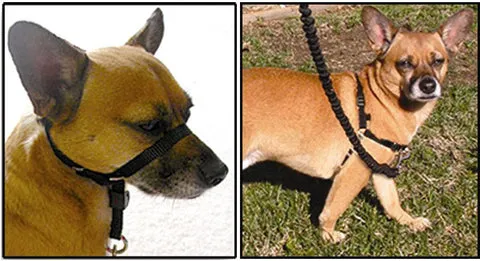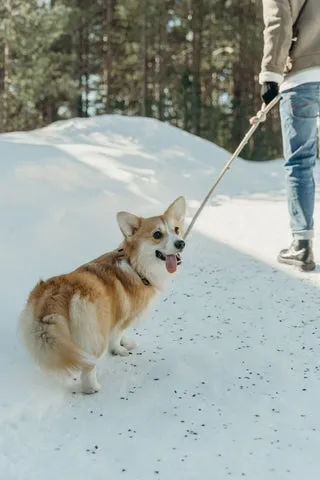Envision serene walks with your canine companion by your side, responsive to your every step, and unburdened by the constant struggle of a pulling leash. This harmonious vision of loose-leash walking, where your dog stops when you stop, turns when you turn, and confidently navigates past distractions, is not just a dream. While Teaching A Dog To Walk On A Leash Without Pulling is often considered one of the most challenging aspects of dog training, it’s an incredibly rewarding effort that strengthens your bond and enhances both your experiences. This guide will help transform your walks into enjoyable outings for both you and your furry friend.
Achieving a relaxed pace during your walks is crucial for your dog’s well-being and your enjoyment. Understanding how to get my dog to stop pulling effectively begins with the right foundation and consistent practice.
Preparing for Loose-Leash Training
Before diving into the steps, it’s essential to equip yourself with the right tools. While a head collar or a front-attachment harness can significantly deter pulling, it’s important to remember that these are aids, not substitutes for proper training. They manage the behavior but don’t teach the underlying skill.
A front-attachment harness is generally a safe and user-friendly no-pull device suitable for most dogs. For dogs with more pronounced pulling or aggressive tendencies, or for owners who require maximum control (such as a smaller person handling a giant-breed dog), a head collar can be highly effective. When using either a head collar or a front-attachment harness, ensure your leash is no longer than 6 feet. An overly long leash could allow your dog to build up enough speed to injure themselves if they hit the end abruptly.
 A small tan dog wears a head collar on the left and a front-attachment harness on the right
A small tan dog wears a head collar on the left and a front-attachment harness on the right
The Core Principle: Stop and Reward
The fundamental method for teaching a dog to walk on a leash without pulling is surprisingly simple: immediately stop moving forward the moment your dog pulls, and generously reward them with treats or praise when they walk calmly by your side. A convenient treat bag worn at your waist can make this process much smoother. If your dog isn’t highly motivated by food, you can use a favorite tug toy, chew toy, or a tossed ball as a reward instead.
Step-by-Step Guide to Teaching Your Dog to Walk Without Pulling
The following detailed steps will help you master the art of loose-leash walking.
Step 1: Making Walking Beside You Rewarding
Begin your loose-leash training in a familiar, low-distraction outdoor area, like your backyard. Equip your puppy or dog with a standard harness and a long rope or leash, ideally 10-20 feet long (avoid retractable leashes). Prepare a supply of high-value, pea-sized treats, such as fresh meat or cheese.
Decide which side you prefer your dog to walk on (traditionally, it’s the left). Regardless of your choice, consistently deliver the treat reward right by your thigh on that designated side. Your dog will quickly learn that staying close to that side is where the delicious rewards appear. Walk briskly and unpredictably around your yard. Each time your dog spontaneously walks beside you, offer enthusiastic praise and a treat at your preferred side. If they continue to walk calmly with you, reward them for every couple of steps. As they improve, you can gradually reduce the frequency of rewards. If your dog seems completely uninterested, bring them inside and try again later when they might be a bit hungrier.
Step 2: Encouraging Your Dog to Follow Your Lead
Once your dog understands that walking beside you is rewarding, it’s time to teach them to actively follow your lead. While walking in your yard, wait for a moment when your dog drifts off to sniff or lags behind. With an upbeat “Let’s go!” command, accompanied by a thigh slap for the first few times to grab their attention, turn and walk away from your dog.
When your dog catches up, reward them generously with praise and a treat by your preferred side. Continue to reward them every few steps as long as they stay with you. If they catch up particularly quickly, offer an extra reward. If the leash becomes tight and your dog doesn’t respond, stop walking and apply gentle, consistent leash pressure. This pressure serves as a reminder of your presence and makes ignoring you slightly uncomfortable, but it should never be used to forcefully pull your dog towards you. As soon as your dog begins to move towards you, release the pressure and praise them. When they reach your side, reward them again. Continue practicing this step until your dog consistently returns to your side after the “Let’s go” command, even if they’ve initially veered off.
Step 3: Structured Sniff and Potty Breaks
Dogs need opportunities to sniff and relieve themselves, but by controlling when these breaks occur, you can reinforce good leash manners. Approximately every 5 minutes during your training session, at a time you would typically give a food reward, say something like “Go sniff” and allow your dog to explore or potty training a 12 week old puppy while on the leash. Consider this a privilege or reward. If your dog starts pulling during this “free time,” immediately say “Let’s go” and change direction, effectively ending the break. When you’re ready to resume formal walking, simply say “Let’s go” and start moving.
Step 4: Mastering Leash Skills with Varied Challenges
As your dog becomes proficient in the previous steps, gradually reduce the leash length you use, eventually reaching a standard 6-foot leash. Introduce variations by practicing walking extra fast or slow, and by making sudden stops and changes in direction. Reward your dog if they can maintain their position by your side during these challenges. Over time, you can reduce the frequency of rewards for simply walking by your side under normal circumstances, but continue to provide high-value rewards when they successfully navigate changes in pace, direction, or encounter distractions. This helps them understand that staying focused is particularly important in challenging situations. Understanding when to start a puppy on a leash is also key to building these foundational skills early.
Applying Training to Real-World Walks
Once your dog consistently performs well in your yard, it’s time to take your training to the streets. Neighborhood walks introduce new levels of distraction, such as friendly strangers, squirrels, and other dogs. For enhanced control, consider using a front-attachment harness or a head collar, and always bring high-value treats.
Start your walk by saying “Let’s go.” If your dog becomes distracted or begins to pull, use the “Let’s go” command and turn to walk in the opposite direction. Reward them with treats when they walk calmly by your side. It’s particularly important to offer extra treats when your dog successfully maintains attention and loose-leash walking during high-distraction moments. Remember to incorporate authorized sniff breaks, especially when teaching a dog not to pull on the leash in new environments.
 Woman walking attentive black and tan dog on a leash in a park
Woman walking attentive black and tan dog on a leash in a park
Advanced Challenges for Leash Training
To further solidify your dog’s loose-leash skills, you can introduce advanced challenges. With your dog in a standard harness and attached to a 6-foot leash, toss a ball or a treat about 20 feet away. If your dog immediately pulls towards the object, say “Let’s go” and turn to walk in the opposite direction. If, however, they walk calmly by your side as you approach the object, allow them to reach it and claim it as their reward. Initially, you might make this easier by using a longer leash or a less desirable object.
Troubleshooting Common Leash Pulling Issues
Even with consistent training, you might encounter some common challenges:
- Dog Crossing in Front: If your dog frequently crosses in front of you, try stomping or shuffling your feet slightly to make your presence more obvious and encourage them to stay beside you.
- Lagging Behind: A dog lagging significantly might be frightened or unwell. In such cases, use ample encouragement rather than pulling them along. If they are lagging to sniff or potty, simply keep walking, applying only gentle, consistent pressure on the leash, and reward them generously when they do walk with you.
- Alternating Pulling and Walking: If your dog alternates between pulling and walking nicely, stop rewarding them for simply returning to your side after a pull. Instead, focus your rewards on consistently taking a larger number of consecutive steps by your side. This helps to reinforce the desired sustained loose-leash behavior. While not directly related to leash pulling, if you’re also working on retraining dog to poop outside, ensure consistency in your routines.
 Small white and brown dog on a leash in the snow, looking back at owner
Small white and brown dog on a leash in the snow, looking back at owner
Introducing the “Heel” Command for Precision
The “heel” command is valuable for short periods when you need your dog to be very close and attentive to you, especially when navigating distractions like other animals or crowded areas.
Begin practicing “heel” in a quiet indoor environment. Place a treat in your closed fist and allow your dog to sniff it. Say “Let’s go” (or “Heel”) and take a couple of steps, guiding them along with the treat in your fist held near your thigh. Praise and reward them with the treat when they follow your fist with their nose. Next, practice having your dog follow your empty fist, continuing to praise and reward them for every couple of steps they follow. Gradually increase your standards with each session. Your closed fist will serve as a consistent hand signal for “heel.” Once proficient indoors, practice this command outside and in increasingly distracting environments.
Teaching a dog to walk on a leash without pulling requires patience, consistency, and positive reinforcement, but the result is a rewarding experience for both you and your dog. By following these steps, you can enjoy more enjoyable and stress-free walks.
